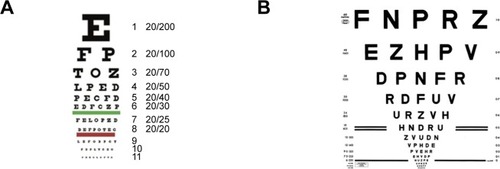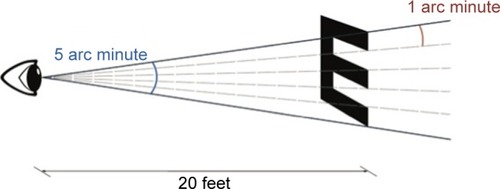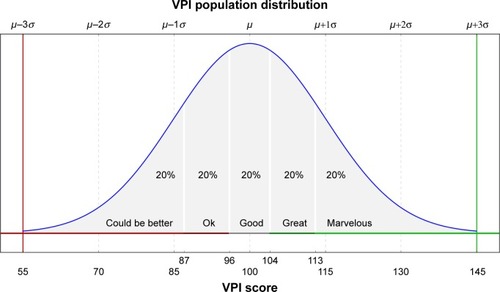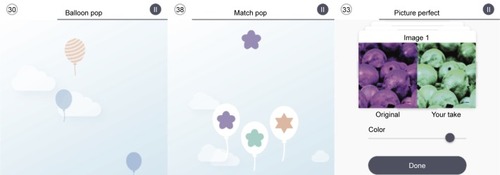Figures & data
Figure 1 Examples of standardized eye charts.

Figure 2 Illustration of a typical block letter E where each of five vertical segments subtends 1 minute of arc (totaling 5).

Figure 3 Distribution of VPI scores among a population, modeled as a normal distribution with a mean of 100 and an SD of 15.
Abbreviation: VPI, vision performance index.

Figure 4 The five components of the VPI: FAMED and their subcomponents.
Abbreviations: VPI, vision performance index; FAMED, field of view, accuracy, multi-tracking, endurance and detection.

Table 1 Number of users from the baseline study matching each category in a number of demographic groups
Figure 5 Example experiences used to gather baseline sample data.

